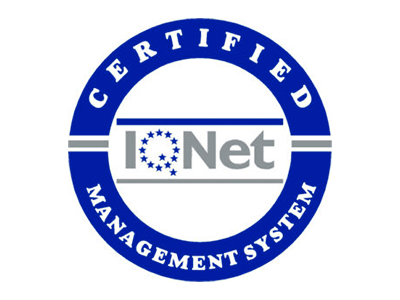How to Master AI Adoption in Business: 5 Essential Steps
27th November 2024

In the race to stay ahead of the competition, businesses are embracing a game-changing ally that’s reshaping industries and unlocking unprecedented possibilities: artificial intelligence.
From automating mundane tasks to uncovering hidden patterns in data, AI is revolutionizing how organizations operate, adapt, and thrive in the digital age.
Are you ready to harness the power of AI adoption and position your business at the forefront of innovation and success?
As the world becomes more and more digital, the adoption of artificial intelligence has become a crucial aspect of modern business. But with so many options and approaches available, it can be daunting to know where to start. That’s why mastering the art of AI adoption is essential for if you want to stay ahead of the curve. In this post, we’ll outline the main steps you need to follow to successfully implement AI into your business strategy.
From identifying the right use cases and selecting the right tools to managing change and ensuring ongoing optimization, these steps will guide you through the process of adopting AI and help you unlock its full potential. Whether you’re just starting out or looking to take your existing AI implementation to the next level, we’ll give you the knowledge and tools you need to succeed.
5 key steps for successful AI adoption
By following these five steps, you can navigate your business along the path to successful AI adoption, unlocking its transformative power and gaining a competitive edge in the rapidly evolving digital landscape.
1. Identifying business problems suitable for AI solutions
The first step in AI adoption is to identify the business problems that can be solved through AI. To do this, it’s important to understand the strengths and limitations of AI technology. AI is best suited for tasks that involve large amounts of data and repetitive processes. Think of AI as a detective that excels at analyzing vast amounts of data and uncovering patterns. For instance, AI can detect customer churn patterns, support proactive retention strategies, automate data entry, detect fraud, and optimize supply chain management. By pinpointing suitable use cases for AI, businesses invest in technology that delivers tangible value.
2. Building a strong data foundation
The success of AI depends on the quality of the data that it’s trained on. To ensure that AI is effective, businesses must build a strong data foundation. Imagine data as the fuel that powers AI’s engine. It’s crucial to collect, clean, and organize data to ensure it’s easily accessible for AI algorithms. Just like a well-organized library allows efficient searching, well-labeled and categorized data enables accurate machine learning. By investing in data quality, businesses can fuel AI systems that make accurate predictions, automate processes, and optimize decision-making.
3. Selecting the right AI technology
There’s a diverse range of AI technologies, each with its own strengths. This includes machine learning, natural language processing, and computer vision. To select the right technology, businesses must consider their specific needs and goals. For instance, if you aim to automate customer support, a chatbot utilizing natural language processing excels at understanding and responding to queries. On the other hand, if optimizing supply chain management is your goal, machine learning algorithms can analyze historical data to forecast demand accurately. By aligning technology with objectives, businesses ensure effective and tailored AI solutions.
4. Creating a supportive organizational culture
The success of AI adoption extends beyond technology—it requires a supportive culture. Think of AI as a new team member that needs collaboration and empowerment. Invest in training and education to equip employees with AI skills. Foster a culture of experimentation and innovation, where employees are encouraged to explore AI applications and think creatively. By embracing AI as a partner, businesses can unleash their full potential and achieve transformative outcomes.
5. Developing a strong implementation and maintenance plan
Successful AI adoption demands a robust implementation and maintenance plan. Think of it as building a sturdy bridge that ensures reliable connections. The main priorities for this are defining clear goals, establishing timelines, and identifying key stakeholders and decision-makers. You also need to regularly monitor AI systems to measure performance, identify areas for improvement, and adapt as needed. By carefully planning implementation and maintenance, you can set the stage for long-term success and maximize the value of your AI investments.
Common challenges in AI adoption and how to solve them
While AI adoption offers many benefits, there are also common challenges that businesses may face. Some of these include:
Lack of data quality
- Challenge: Poor data quality can hinder the effectiveness of AI systems, leading to inaccurate predictions and unreliable outcomes.
- Solution: Invest in data quality by implementing robust data collection and cleaning processes. Ensure data is accurate, relevant, and well-structured to maximize the performance of AI algorithms. Employ data validation techniques and regularly monitor and improve data quality.
High cost of implementation
- Challenge: AI adoption can be perceived as expensive, involving costs related to infrastructure, technology, training, and hiring AI talent.
- Solution: Carefully consider the return on investment (ROI) of AI adoption. Start with pilot projects to demonstrate the value of AI before scaling up. Explore cloud-based AI solutions to reduce upfront infrastructure costs. Collaborate with external AI service providers or consultants to leverage their expertise and minimize implementation costs.
Employee resistance to change
- Challenge: Some employees may be resistant to adopting AI due to fears of job displacement or uncertainty about how AI will impact their roles.
- Solution: Create a culture of experimentation and education. Involve employees in the AI adoption process from the beginning. Provide training and upskilling opportunities to help them understand AI’s potential and how it can augment their work. Emphasize the benefits of AI, such as automating mundane tasks, enhancing decision-making, and enabling employees to focus on higher-value work.
Lack of AI expertise and talent
- Challenge: Finding skilled AI professionals who can effectively implement and manage AI systems can be challenging, especially in competitive markets.
- Solution: Invest in building internal AI expertise through training and upskilling programs. Partner with educational institutions or external AI consultants to access specialized knowledge. Leverage AI platforms and tools that offer user-friendly interfaces, allowing non-experts to utilize AI capabilities effectively.
Ethical and regulatory considerations
- Challenge: AI adoption raises ethical concerns regarding privacy, bias, and accountability. Compliance with relevant regulations can be complex.
- Solution: Develop robust governance frameworks to address ethical considerations in AI adoption. Implement transparent and explainable AI models to ensure fairness and mitigate biases. Stay updated on regulatory requirements and incorporate them into AI development and deployment processes. Engage legal and compliance experts to navigate the regulatory landscape effectively.
Tools and resources for AI adoption
Businesses have access to a range of tools and resources for successful AI adoption. AI platforms offer pre-built models and tools for development and deployment. Training courses and online learning platforms provide education and upskilling opportunities. Consulting services offer expert guidance throughout the implementation process. Open-source libraries and frameworks offer reusable code and algorithms. Engaging with AI communities and forums facilitates knowledge sharing and collaboration. By leveraging these resources, businesses can adopt AI effectively and efficiently, driving innovation and gaining a competitive edge in the rapidly evolving digital landscape.
Final Takeaways
The adoption of AI is set to continue growing in the coming years, as businesses look to leverage its power to stay ahead of the curve. To ensure successful AI adoption, businesses must follow the five key steps outlined in this article, including identifying the right use cases, building a strong data foundation, selecting the right technology, creating a supportive organizational culture, and developing a strong implementation and maintenance plan. By doing so, businesses can unlock the full potential of AI and gain a competitive advantage in their industry.
Find out how our Virtual Agent can catapult your business into the future.
Don’t miss out on our weekly blog posts and LinkedIn updates about the fascinating advancements that will propel your business.
Ready to see what we can do for you?
In the right hands, artificial intelligence can take human performance to a hitherto unimaginable level. Are you ready for evolution?




